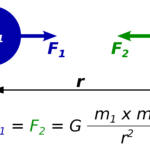Issac Newton was a highly curious scientist who lived from 1643-1727. During Issac’s time, the foundations of modern physics were being laid down. Issac contributed to mathematics, optics, and physics through his revolutionary theories on motion. Issac Newton published three major works regarding motion which became known as Newton’s Three Laws of Motion.
The First Law of Motion states that every object will remain at rest or in uniform motion in a straight line unless compelled to change by an external force acting on it. This means that objects want to be at rest unless something acts on them to make them move either fast or slow or even stop them from moving all together. You see this everyday when you watch people ride their bikes down the street. The bike will not start moving unless the rider pedals. Likewise, it will not stop unless acted on by forces such as the friction of the road and air, or the rider braking.
The Second Law of Motion states that if an object is compelled to change its motion, it will do so in the direction of the force impressed on it and by the amount of that force. Another way this law can be expressed is: Force = mass x acceleration (F=ma) When something has more mass, it takes more force to make it move. For example, it is much easier to throw an apple than to throw a metal ball of the same size. This is because the apple has less mass, and so it takes less energy to get it to move.
Third Law of Motion states that every action has an equal and opposite reaction. This law means that when one object pushes on another object, the second object will push back on the first with an equal amount of force. As you sit in your chair, the weight of your body pushes down against the chair. In order to hold you up, and keep from collapsing, the chair must also push back up against you with an equal amount of force.
Issac Newton developed many other scientific theories as well such as gravity, calculus, and optics. He lived during a time of great scientific discovery which was the Age of Reason. Issac Newton’s Three Laws of Motion are not only foundational to physics but also very instrumental in our present day society. The motion of items around us plays an important role in every day life whether it is riding bikes or simply pushing open doors that weigh less than we do.






